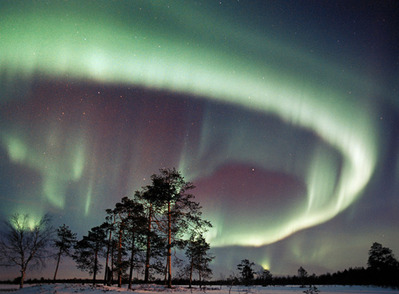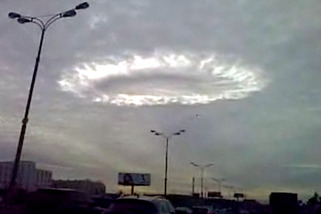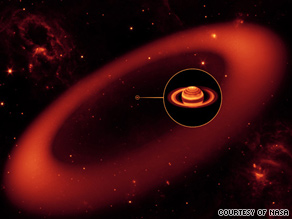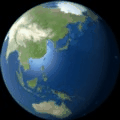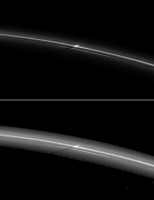World's Smallest Snowman
From the original YouTube post:
The snowman is 10 µm across, 1/5th the width of a human hair.
Watching Space
Watching the skies is just part of the day, and night for some people. I am one of them. The first thing I do every morning is go outside and look up at the sky. The last thing I do before going to bed, each night, is to watch the sky for awhile. Sometimes, I even lay in bed and just look up through the window until it is morning. When I am not outside looking at the sky, often with a camera in my hand, I check in with my favorite websites to catch up on space weather and the new photos of sky watchers around the world.
The sky is always changing, revealing itself in glimpses. I think that is why I find it so fascinating. Space is a mystery we will never stop discovering and its interaction with our earth's atmosphere create some of the most spectacular sights we will ever witness.
Unexplained UFO Shaped Halo Hovering over Moscow
Additionally, there is no explaination for this seemingly supernatural formation. Witnessed by millions in Moscow who braced themselves for a close encounter, scientists and officials are saying that it is some kind of optical illusion. The halo can only be explained away as an anomoly of clouds due to a combination of differing air temperatures.
New Giant Ring Around Saturn
Scientists using NASA's Spitzer Space Telescope have discovered that there is an enormous ring outside of all of the other rings around Saturn. The ring is composed of widely diffused particles of dust and ice. The orbital Spitzer telescope, which "sees" in infrared, enabled scientists to spot the glow of the cooler dust against the warmer matter surrounding it. The ring really is absolutely ginormous; astronomer Anne Verbiscer from the University of Virginia, Charlottesville compares it to the size of Earth's moon. "If you could see the ring, it would span the width of two full moons' worth of sky, one on either side of Saturn." Verbiscer and her colleague at the University of Charlottesville, Michael Skrutskie are co-authors of a paper in the journal Nature.
Saturn Equinox Images from Cassini
The Cassini spacecraft, which entered orbit around Saturn on June 30, 2004 has successfully observed and recorded and sent back all sorts of data about seasonal changes on Saturn, as the planet experienced its equinox. The main NASA / JPL Cassini site is here.
Last month, on August 11, sunlight reaching Saturn hit the planet's rings edge-on, essentially making them disappear in the planet's equinox. Saturn has two equinoxes, much like Earth, during each of its "years" or orbits around the Sun. Each orbit takes 10, 759 Earth days, or 29.7 Earth years, so catching this equinox was a pretty big deal. There's a good video here explaining, exactly, what's happening to cause the equinox.
Hubble Telescope Gets an Upgrade and Captures Butterfly Nebula
The Hubble Space Telescope was named for Edwin Hubble, an American astronomer who made significant contributions to the field of astronomy. The Hubble was first put into orbit in April of 1990 after two decades of difficulties and delays. It is unique in many ways including the fact that it is the only telescope ever designed to be completely serviced while in space by astronauts who travel to the telescope to perform needed repairs as they did in May when the Hubble was fitted with new filters and a new camera.
Inner-nauts Explore a New World
Space is an exciting place these days. We've got an International Space Station that is bigger and better than ever before, the Hubble Telescope has been re-vamped and we now have crystal clear photos of galaxies 5 billion light years away, dark matter is on the move, repelling galaxies and solar systems apart at an ever increasing pace to our mystification and concern. Our understanding and exploration of space has been taken to the next level and the discoveries we are on the brink of making are highly thrilling.
Hello From Earth
This site, Hello from Earth is collecting
short text messages to be transmitted to Gliese 581d, a planet outside our Solar System that, from what we can tell, might support life. It's free to register and send a comment, but the deadline is 5pm Monday 24 August 2009 Sydney time (07:00 GMT Monday 24 August 2009).Anomaly in Saturn's Rings
In the latest batch of images from the Cassini probe investigating Saturn, one of them shows, quite distinctly, a small object piercing the F ring of debris that surrounds Saturn. There's a picture of the bifurcated ring to the left there; click it for a larger image. It looks very much as if something small has cut a path through the dust in Saturn's F ring, moving through the ring from below, and leaving a trail of dust particles in its wake.

